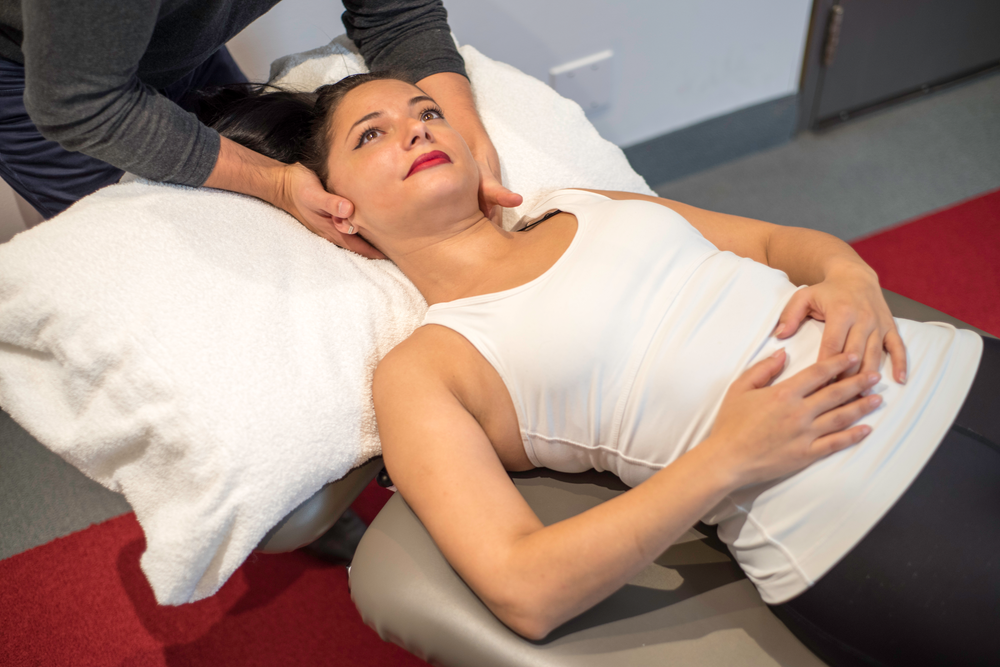Have you ever felt dizziness or vertigo? This is the sensation of spinning inside your head or the room is spinning around you. This condition can be debilitating. Often times this can also cause nausea and confine an individual to their bed, forcing them to take time off work or skip social events. Dizziness disorders can be treated effectively and sometimes very quickly with physiotherapy treatment. Let’s take a look at this case for example.

HISTORY
Shannon is a 45 year old female. She is a lawyer, a wife, mother of 3 wonderful kids, and a die-hard raptors fan (Go Raptors!). She is healthy and works out twice a week with a personal trainer and plays squash once a week. Her cardiovascular health exam was normal during her last physical with her doctor one month ago.
SYMPTOMS
In the last month Shannon has notice that she “gets the spins” when she gets out of bed or when she stands up from chair. She also gets this sensation when she walks around people through the busy PATH at lunch time. Turning her head suddenly also bothers her as well as watching a movie with a lot of action on the screen. Shannon reports having this same issue about one year ago but it resolved naturally after three months. The current bout of dizziness is worse than before and doesn’t feel like it’s getting better. This episode seems to come on suddenly without a cause.
EXAMINATION
Based on Shannon’s symptoms I suspected that she may have a condition called BBPV (Benign Paroxysmal Positional Vertigo). This condition originates, in the vestibular system, which is in the inner ear. The vestibular system consists of 3 canals in the inner ear. When a particle gets into one of the 3 canals it can trigger a bout of vertigo, giving her “the spins”.
To determine whether or not Shannon had BPPV I performed a test called the “dix-hall pike”. This test involves moving Shannon from an upright sitting position to her lying on her back with her head tilt back. This movement reproduced Shannon’s vertigo. I also observe how this test affected her eyes. Patients with BBPV often have nystagmus, which is involuntary eye movement up and down or left and right. The direction of the eye movement and her symptoms helped guide further testing to determine which of the 3 canals of the ear is affected. The left and right movements of her nystagmus lead me to perform a “head roll test” which also reproduced her vertigo. This test identified the canal that was affected and now I know how to fix it.
TREATMENT
In order to remove the foreign particle out of the canal once and for all, we need to maneuver the head and body through a series of movements. This particular maneuver is called a “Barbeque Roll” (this is the real name of the test!). Similar to a rotisserie chicken at Swiss chalet, Shannon was positioned lying her on right side, then lying on her back, then lying back, then lying on her left side, and finally onto her stomach each for 15 seconds.
nn
After this procedure we retested using the “head roll test”. Happily she says that there is only mild dizziness left and overall she felt 75% better. She was lying on her back during this test and when she stood up, she noticed that getting up no longer gave her the spins. She felt better with turning her head and walking around. In order to address her difficulty watching a movie “with a lot of action” I prescribed her an eye focusing exercise that she can do at home.
FINAL THOUGHTS
Dizziness and vertigo is an often over looked and under treated condition. This condition can be debilitating but there are treatments that have been proven to effectively treat it. Physiotherapists require specialized training to treat dizziness and vertigo. At Rebuild Physiotherapy we offer this specialized service so if you are suffering from this issue book an appointment today!

